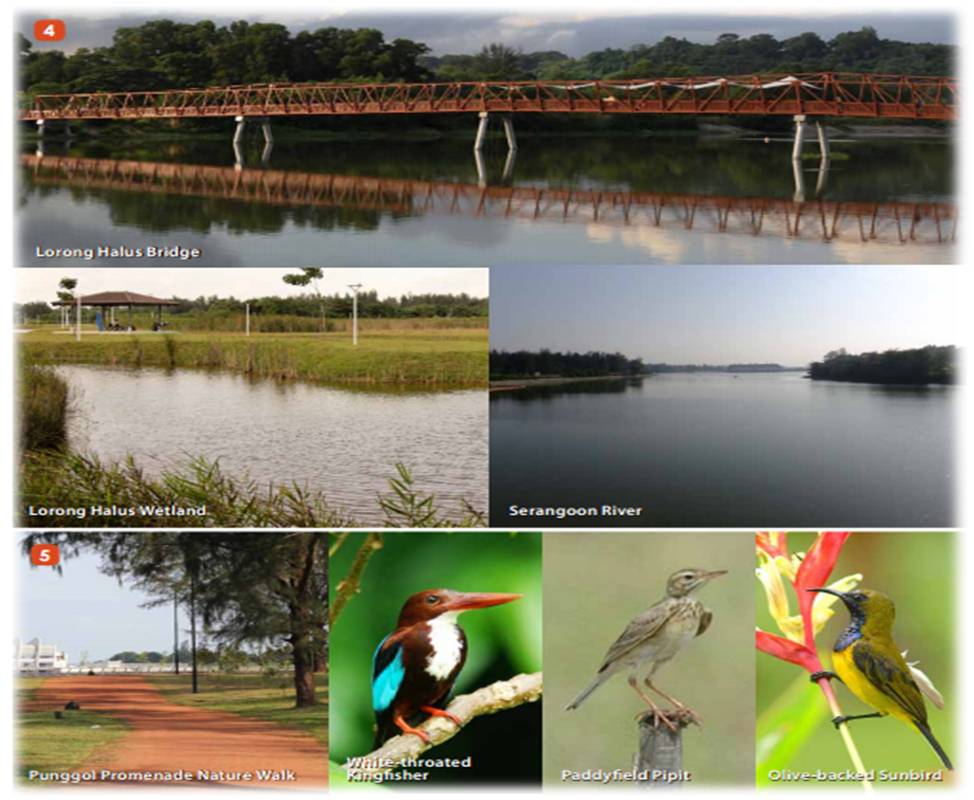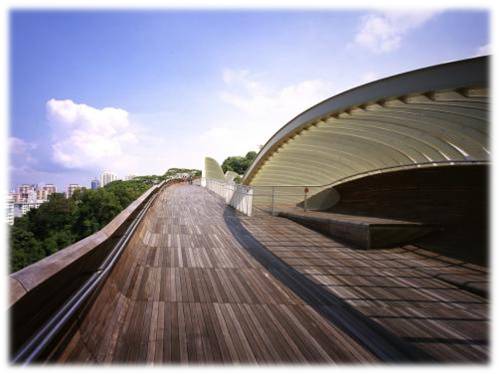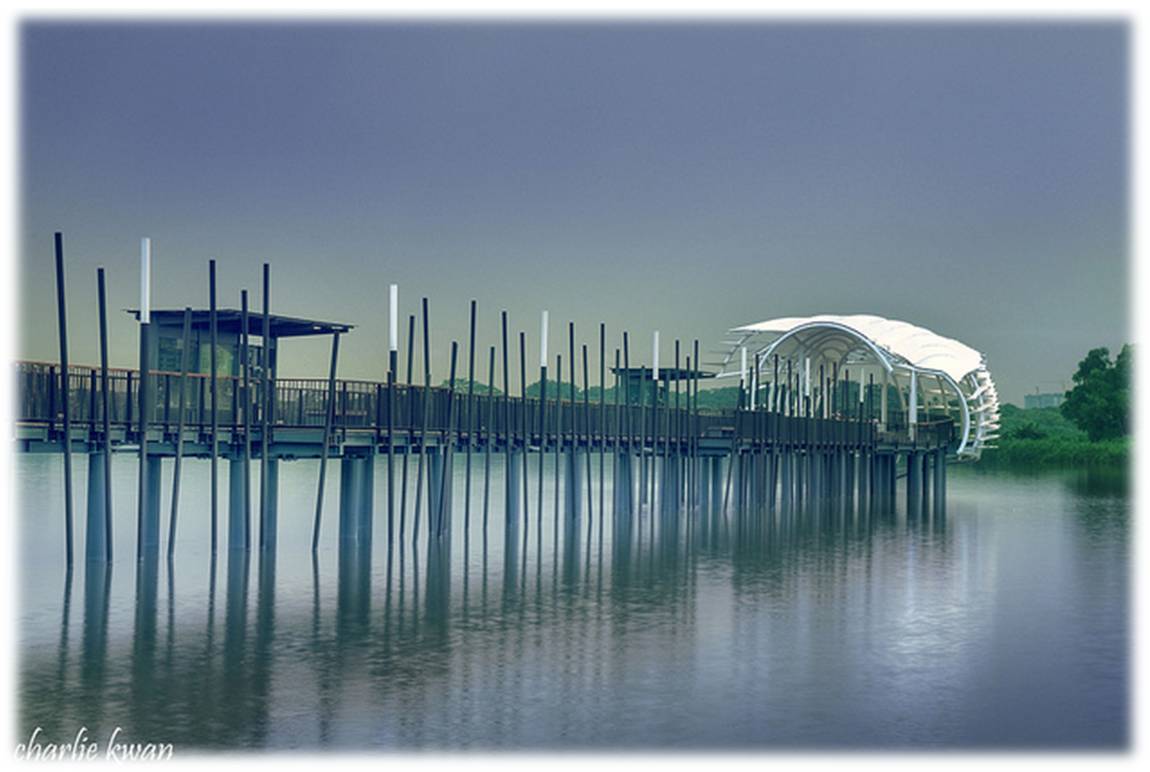[fblike]

{Some of the inhabitants you can catch at Punggol Promenade & Lor Halus Wetland Park if you’re lucky! © NParks}
Located along the eastern bank of Serangoon Reservoir, Lorong Halus Wetland was transformed from a landfill into a haven for biodiversity. Spend some time exploring this wetland that spans the area of 18 football fields! Visitors entering Lorong Halus Wetland from Punggol Promenade will be greeted by the elegantly designed Lorong Halus Bridge, which is a charming addition to the natural surroundings. It is also part of the North Eastern Riverine Loop that aims to bring the public closer to the natural environment – vegetation and water.

{Lor Halus Bridge at sunrise. © Tze Ru Pang}
“Usually pedestrian bridges in Singapore are carried out as pile and beam bridges and henceforth tend to look heavy. In this case a more filigree truss structure was chosen. Five 30m long compartments span between concrete piles with steel caps. The number of piles into the riverbed was decreased by the greater span, reducing the impact on the bridge’s natural environment to a minimum.
The pedestrian bridge is lit up with ultra-efficient 10W LED linear lighting bars, replacing the conventional method of using fluorescent lights.” (Source: World Architecture News)
Having personally been to the Punggol Promenade, crossed the Lorong Halus Bridge, and cycling through the Lorong Halus Wetland that links you all the way to Pasir Ris, I have to say that it is a really beautiful space of greenery and artfully constructed footpaths which are made from light gravel and pebbles blends perfectly into the natural landscape, and that, makes your walk all the more enjoyable as you feel like part of the natural environment. When it first opened, there were few visitors, only a sprinkling of adventurous cyclists like myself, and landscape photographers who were there to take advantage of the abundant sunlight and vast space. Since then, on my frequent visits back, both on my bike or on foot, I’ve seen parents bringing their children for a day out exploring the biodiversity of the area, and reading from the informative signages about the Wetland and its inhabitants. I’ve also seen couples, young and old, taking strolls in the evenings.

{People coming back from the Lor Halus Wetland Park via the Bridge. © Slow Rider}
Converting this area into a wetland, at close range to all the HDB flats makes it a great escape for us city people. Despite being located in close proximity to the residential areas, when you’re strolling along Punggol Promenade or Lorong Halus Wetland, you practically feel as if you’ve travelled out of town to the countryside, the feeling you get is of a well-maintained Pulau Ubin, without the inconvenience of a bum-boat ride (as enjoyable old school as it may be :D). Only a stone’s throw and a short walk away from our homes, there is such an expanse of greenery and wealth of biodiversity – our dose of interaction with the natural environment made convenient. Beautiful.
If you’re interested in exploring the Lorong Halus Wetland Park, along with the rest of the equally attractive spots along the North Eastern Riverine Loop, do check this extremely comprehensive NParks guide out.











